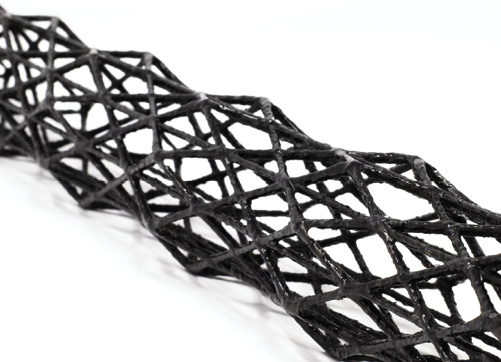

A composite materials specialist seeking a greater role for construction-grade carbon fiber has garnered a $100,000 Environmental Protection Agency Small Business Innovation Research Program award for development of reinforced concrete increasing telecommunication tower performance in the face of natural disaster exposure.
“Infrastructure must become safer, longer lasting, and more sustainable,” says Nathan Rich, chief executive officer of Springville, Utah-based IsoTruss Inc. “With this grant from the EPA, we can move forward in developing an eco-friendly, composite-reinforced concrete foundation aimed at improving resiliency while decreasing construction time and costs compared to traditional solutions.”
“This solution will be timely for telecom tower owners with the transition to 5G networks in the U.S. that will increase tower density by approximately 10 times, leading to a total addressable market of $75 billion,” adds Chief Operating Officer Cromwell Wong.
Using carbon fiber or other composites with high strength/weight ratio properties, IsoTruss reinforcements or structures incorporate isosceles triangles (two equal sides) to form a strong, stiff truss of pyramids, “spiral[ing] in a piecewise linear fashion in opposing directions around a central cavity. The helical and longitudinal members are repeatedly interwoven, yielding a highly redundant and stable configuration.”
The proposed IsoTruss-reinforced tower foundation aims to best a conventional steel-reinforced concrete one by better combining the axial and shear strength of carbon fiber reinforcement. When measured against steel, the latter material has the potential to provide more energy absorption and equip foundations to withstand higher loading conditions. IsoTruss has proved the engineering properties of carbon fiber used to fabricate namesake lattice towers for telecommunications customers.
The IsoTruss-reinforced foundation concept was successfully tested with a foam foundation pilot deployment for a commercial customer. Installation costs were reduced by 60 percent compared to a typical tower foundation. Success in telecom installations stands to guide IsoTruss reinforcement into mainline concrete construction, including building and bridge applications.
IsoTruss is one of 30 small businesses to receive EPA funding to develop novel technologies to address pressing environmental and public health problems. IsoTruss carbon fiber lattice cell towers are well-suited to hurricane or typhoon-prone regions, reflecting the composite material’s corrosion resistance and integration of axial and shear components into a single structure design. — www.isotruss.com